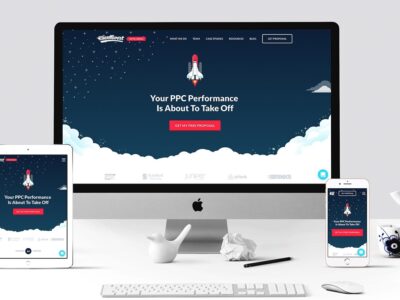A key driver in this context is the ever increasing focus of digital measures on performance as well as the pursuit of comparability, transparency and the most holistic statements possible: with regard to the profitability of the resources used and the effectiveness of the measures and campaigns implemented by a company.
The right data – in the right quality, at the right time, in the right place – as well as the motivation to use data and thus information in the best possible way to expand their own business success, drives tech, data and digitally thinking companies on the market more than ever . This forces the laggards in the field of analytics to act.
In this article, we explain which aspects are particularly interesting in our opinion to derive Data Analytics Value.
1. Holistic solutions – get rid of the data silos
Promoted by companies with transactional business models, new (web) analytics options mean that the providers of products and services can better and more precisely reach their target groups and personas in a very granular manner. Holistic and user-centered strategies enable companies to continuously implement better campaigns, create a better customer experience and thus ultimately achieve higher conversion rates.
Digital marketing and technology have always gone hand in hand. The best possible solutions provide for in-depth integration of systems that were previously operated in a silo-like manner. In this way, companies can evaluate and use marketing-relevant knowledge as quickly as possible. Speed, i.e. the minimization of the time window between analysis and the derivation and implementation of data-driven measures, becomes a decisive success factor as a result.
A good example of this is the cooperation between Google and Salesforce . This is characterized by the fact that it combines sales, marketing and advertising data and generates extensive knowledge about the users behind it. In addition to the website-related data, almost all touchpoints – including offline data – are evaluated. Data such as e-mails or call center information used to be analyzed separately. Today, systems lead them using the new full-stack solutions in a data pool with other data. This enables valuable information to be used profitably for decision-making processes – to design and convey offers. Full-stack solutions thus become a digital competitive advantage for companies that can afford these investments, because: They have the potential to bring about data-based decisions at short notice and convert them into concrete marketing measures.
2. Data-driven corporate culture and alignment of your own organization to the new requirements
There are limitations to the new possibilities. Practice shows that to date, many companies have asked more questions than answers when it comes to really exploiting their potential. This is especially true in the area of web analytics. On the one hand, innovations represent changes. On the other hand, many companies have to rethink their processes and procedures massively.
Example: The reporting system provided by the online marketing or web analysis departments for the respective organization clarifies this fact. Reports and dashboards that are generated by the analytics tools used in many companies still resemble a simple string of channels to this day. They often reflect the internal organization or the responsibilities there. Instead of targeting the long-term value of a user or a user group and placing this at the center of digital marketing activities, many companies set priorities and budgets on the basis of successive individual transactions. They assign these to the classic digital channels SEO, SEA, Display , social etc. too. Many organizations do not yet manage to raise the potential of analytics to achieve user-centered marketing goals or to meet these demands.
Opportunity: More than ever, ambitious web analysts and online marketers can act as “change agents” and bring about changes in the company. You can advise and play a formative role in the company. It is important that these change agents have a right to content with their own data. And that they ensure that the data complexity is removed for other company departments involved. The declared goal is to win other areas of the company as participants in the big picture in the best possible way. You should convey the really important KPIs and continuously ensure the necessary changes in the form of a data-driven corporate culture.
3. Generate added value through clever data visualization
A relevant trend in times of exponentially increasing amounts of data is the consolidation of information. Companies are increasingly trying to merge different data sources in order to generate new insights. Initially, the driver behind this development may have been the desire to no longer view data distributed across different Excel, PDF or Powerpoint files. In the meantime, however, many companies have come to realize that they have to link data with one another. Otherwise, they won’t make the jump from an isolated channel assessment to a user-centered analysis of the various contact points of a customer journey.
This is where data analysis and visualization tools such as Google DataStudio or Tableau come into play.
Native (free) or (partly paid) community connectors, especially for the Google DataStudio, help marketers to combine different data sources in one report. Comparatively new features such as the blend function support users in combining data from different sources using a primary key to form a new source. In 2019, demand and demand will increase here.
4. More efficient budget allocation through attribution
Web analysis tools such as Google Analytics or Google Analytics 360 have long enabled web analysts to evaluate and attribute the importance of individual channels. In our experience, however, many users still make too little use of it. Many still rate channels using the last-click model – purely according to deals. In doing so, they disregard supporting channels. In practice, this is far too short-sighted: How many deals would there really have been if another channel or an interaction with an advertising medium had not generated contact with the user beforehand? Can I do without a channel or reduce the budget for it just because it didn’t close at first glance? Attribution will become one of the trending topics of 2019 precisely because companies are increasingly dealing with such questions and want to allocate the increasing online budgets more efficiently.
Data aggregation and democratization pave the way for this. Announcements such as Google Attribution or new tools (such as the Google Marketing Platform with Search Ads 360 and Display & Video 360) help to control channels not just on a click basis. More than ever, it is important to control visual contacts in the display network intelligently and automatically and thus optimize the budget.
5. Artificial intelligence makes the work of many campaign specialists and web analyzes easier
More data from different channels, additional key figures, more individual target groups, different attribution models – the flood of information is becoming an increasingly demanding challenge for campaign optimization. However, campaign managers are getting increasingly better help from algorithms and artificial intelligence bid optimization and automation– not least within the web analytics tools. Smart goals were a first but little-used start. Smart insights, automatic information on current developments, forecasts and anomalies are among the newer achievements with great potential. Entering acute questions directly into the web analysis (for example: “Breakdown change in ‘Pageviews’ by default channel grouping”) and receiving answers via Natural Language Processing directly in the tool is already possible in the English language version. As soon as this function is also available in German, it will make it easier for many users and companies to get started with web analysis. Experienced analysts using AI for the foreseeable future however, replacing it is not realistic. Explanation: It is still up to you to ask the right questions and to derive the right actions from the answers and data. Nevertheless, artificial intelligence can also help analysts to get to their goal faster.
6. Medium-sized companies and B2B are becoming more active
Small and medium-sized enterprises – especially B2B companies in mechanical engineering and the automotive industry – are now becoming aware that web analysis offers enormous advantages. The interlinking between web analysis and CRM systems opens up new possibilities – for example for lead scoring, optimized targeting or market coverage analyzes. However, there is still a long way to go for many medium-sized companies before these options can be used operationally. Web analysis tools are usually available there, but only rudimentarily set up. In addition, there is often a lack of resources for data analysis and use. But currently more and more medium-sized companies are investing their budgets and time in web analysis. They make decisions more based on data or at least prepare them with the support of web analysis. The product management and partly also the top management are also increasingly interested in the variety of information that a well-established web analysis provides. Last but not least, decision-makers want to be regularly up to date on current developments via dashboards and reports.
This development will continue in 2019. However, it would be desirable for even more companies to recognize the importance and the possibilities of an integrated CRM and web analysis process, to build up know-how and invest in resources.
7. New positions, skills and know-how – the competition for digital talent
The demand for well-trained digital employees has long since significantly exceeded the available supply. A look at the common job search engines such as Indeed or Stepstone shows this. The example of the vacant data science positions in Germany shows what is probably the most important challenge for companies in 2019: The positive industry prospects and the increasing need for “highly trained” resources create exciting prospects for all interested and passionate online marketers Companies face challenges because: They have to gain fresh know-how and experts for themselves.
In web analysis in particular, for example, there is a growing need for profiles that combine technical know-how with online marketing skills and an understanding of digital business models with key figures. For example, the “Trakker” ensures that companies can measure business-relevant information and key figures. At the same time, he provides programming services (e.g. for the Google Tag Manager) without pursuing a (classic) developer career.
The perspective of acting at the interface between business requirements and technology, of being active in an environment that functions with a high degree of division of labor and of creating the necessary prerequisites from a company perspective will become an essential task for employees and companies in online marketing in the future and in the long term.
8. Data quality: garbage in, garbage out
Regardless of whether attribution or artificial intelligence – every data-driven or data-inspired decision requires data that is as complete and “clean” as possible. In practice, however, we often see a lot of catching up to do. No or at least no uniform campaign tagging, missing filters or an inadequate “standard” implementation of web analysis cause dubious data quality in many companies. This not only has negative effects on the analysis results. In the event of repeated “incorrect” data, this ensures distrust and rejection of the web analysis among all parties involved. In the case of web analysis as a “single source of truth”, a cross-system and cross-silo provision of data in a uniform data view and stringent definitions etc., companies are set back if the actual cost-per-lead cannot be clearly determined. The same applies in the event that this value is repeatedly questioned. Inadequate data quality also complicates the campaign manager’s work. Algorithms that learn on the basis of this data and are supposed to make “decisions” only work to a limited extent if the data basis is falsified.
Due to the diverse effects and the risk of wrong decisions at different hierarchical levels, continuous data quality optimization for companies and agencies should be one of the most important web analysis topics in 2019.
9. Data protection
Data protection has a decisive influence on the data quality, and thus the analysis results. Many organizations or their legal departments and guidelines prevent evaluations such as cross-device tracking. And not just since the General Data Protection Regulation (GDPR) came into force. Although we are only gradually feeling the consequences of the GDPR on the market, the ePrivacy Directive is already a real sword of Damocles hanging over web analysis. The timing and content of the EPVO have not yet been definitively determined. But in the current versionThe collection of even anonymized and pseudonymized information requires an opt-in. The experiences of many companies that have already switched to explicit advertising consent for web analysis within the framework of the GDPR identify a sharp decline in measurable data. And this takes web analysis and targeted (re-) targeting ad absurdum due to the lack of a population that is too small. As a result, tool providers would have to look for other tracking approaches.
10. There is no such thing as one trend summary and outlook
As in all other online marketing disciplines, there isn’t one prevailing trend that should make online marketers even more successful in 2019. Web analysis in particular is about constant learning, questioning and improvement . Companies that have internalized this will have fun and ultimately also benefit from the mix of these different trends.



















Comments